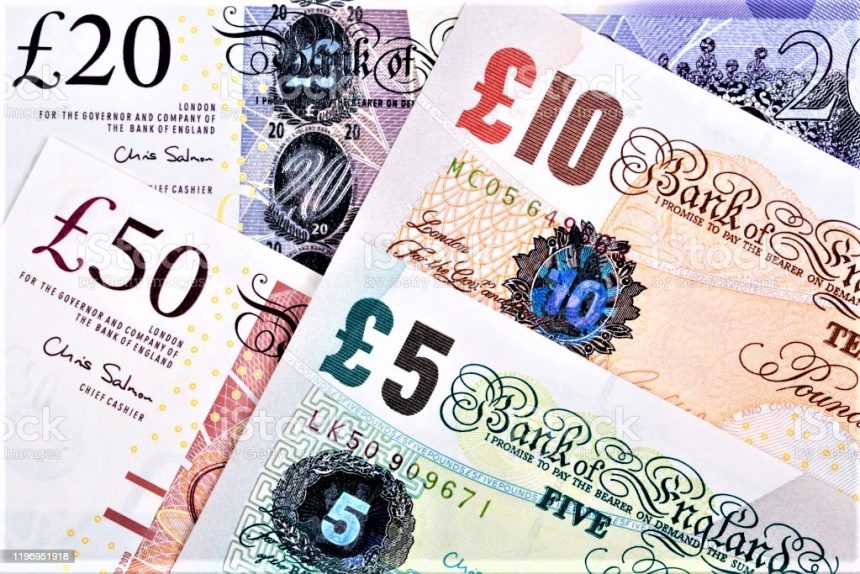Pound Sterling Edges Higher as Fed-BoE Policy Week Begins.
As global markets brace for one of the most crucial weeks in central banking this quarter, the British Pound (GBP) has gained modest ground against the US Dollar (USD) during Monday’s European session. The Pound rose to 1.3285, up from a weekly low of 1.3260, amid a light trading session due to the UK’s Early May Bank Holiday. While the price action is relatively subdued, expectations are mounting for increased volatility in the days ahead, particularly with monetary policy decisions from both the Federal Reserve (Fed) and the Bank of England (BoE) scheduled for midweek.
This week’s divergence in central bank outlooks has created a cautiously bullish environment for Sterling in the short term. The Federal Reserve expected to hold rates steady, while the BoE widely anticipated to begin an easing cycle with a 25 basis points cut.
Fed Expected to Hold Rates Steady: Guidance in Focus
The Fed will announce its policy decision on Wednesday, with the CME FedWatch Tool indicating a nearly 100% probability that the US central bank will maintain its benchmark interest rate in the range of 4.25%–4.50%.
While no rate changes are expected, traders will closely scrutinize Jerome Powell’s forward guidance for any dovish hints or clues about future rate cuts in the second half of 2025. A shift in tone could influence the US Dollar’s trajectory, which has come under pressure in recent sessions.
US Economic Data Signals No Urgent Need for Fed Cuts
Recent macroeconomic data suggest the US economy is not signaling an imminent slowdown. The April Nonfarm Payrolls showed stronger-than-expected job creation, while Q1 GDP, though initially viewed as soft, revealed that much of the drag came from a surge in imports, not weakness in domestic demand. These signals have provided ammunition for Fed hawks who believe rate cuts are premature.
Another obstacle to Fed easing is persistent consumer inflation expectations, as US businesses pass higher input costs onto consumers, especially with elevated import tariffs still in place under the Trump administration’s protectionist trade policies.
Trump Pressures Fed to Ease: Political Influence in Play
Adding a political twist to this week’s events, former President Donald Trump has resumed pressure on the Fed to cut interest rates, asserting that the US economy is strong enough to absorb looser policy and that inflation is falling.
In a Truth Social post, Trump wrote:
“Gasoline just broke $1.98 a Gallon, the lowest in years… no inflation, the Fed should lower its rate!”
However, despite his aggressive stance, Trump denied any intent to fire Fed Chair Jerome Powell, quelling market fears about a direct attack on the Fed’s independence.
While the Fed remains technically autonomous, ongoing rhetoric from political leaders has started to influence market sentiment, especially as the US heads into an election cycle. Analysts believe Powell will resist political interference but must still justify the Fed’s stance amid improving data and public scrutiny.
Bank of England Likely to Start Rate-Cutting Cycle
In contrast, the Bank of England is widely expected to initiate a rate-cutting cycle when it meets on Thursday. Market consensus points to a 25 bps reduction to 4.25%, marking the central bank’s first cut since the pandemic-era tightening.
BoE’s Justification: Lower Energy Prices and Controlled Inflation
Analysts at Bank of America expect a majority vote of 8-1 in favor of the cut, with policymaker Swati Dhingra potentially advocating for a larger 50 bps cut. The BofA believes the BoE is justified in acting now due to:
- Falling energy prices
- Improved inflation outlook
- Rising global trade risks, especially from the renewed US-China tensions
The UK has seen downward trends in headline inflation, largely helped by declines in utility and energy prices, while core inflation has begun to ease. Real wage growth has also remained subdued, reducing concerns over a wage-price spiral.
BofA further projects that the BoE may cut rates two more times in 2025 following this week’s expected move, assuming inflation continues to trend lower and no major external shocks materialize.
UK Holiday Trade Keeps GBPUSD Volatile but Range-Bound
Despite the upcoming BoE rate cut, the Pound Sterling is holding steady, aided by growing expectations that UK rates could remain higher for longer than previously forecasted.
On Monday, the GBP/USD traded in a narrow range due to the UK holiday, but underlying sentiment remains cautious. Some traders remain skeptical that the BoE will adopt a full-blown easing cycle, especially if geopolitical risks persist or inflation rebounds.
The UK currency’s gains are also tempered by a stronger USD last week, which saw brief gains following solid labor market data. Yet, the broader dollar trend remains vulnerable to changes in Fed communication this week.
US-China Trade War Casts Shadow Over Global Outlook
Beyond central bank policy, investors remain wary of geopolitical headwinds, particularly the ongoing US-China trade tensions. President Trump over the weekend stated that he has no plans to speak with President Xi Jinping this week, but left the door open for future tariff adjustments.
“At some point, I’m going to lower them [tariffs], because otherwise, you could never do business with them…”
This ambiguity has left markets nervous. A prolonged trade war between the world’s two largest economies could impact global demand and weigh heavily on UK exporters, many of whom rely on trade flows through Europe and Asia.
Key Technical Levels and GBPUSD Price Scenarios
As of now, the GBPUSD is trading just below the 1.33 psychological barrier. This level remains a key short-term resistance. A dovish Fed and less aggressive Powell could send the pair toward 1.3350–1.3400 in the coming sessions.
Conversely, if the BoE’s rate cut is accompanied by a more cautious economic assessment or hints at deeper cuts ahead, Sterling could retreat below 1.3250, especially if the Fed surprises with hawkish messaging.
Technical indicators show a slight bullish tilt in the short term, but momentum remains subdued. The UK holiday may delay any breakout until Tuesday when volumes return to normal.
Conclusion: Policy Divergence and External Risks to Drive Pound Volatility
This week’s Fed-BoE monetary policy announcements are set to drive market volatility across the forex space. With the Fed expected to hold and the BoE poised to ease, GBP/USD could experience heightened swings, especially with external risks like Trump’s tariff agenda and global inflation concerns still unresolved.
The Pound may enjoy near-term strength if the Fed turns dovish without the BoE sounding overly bearish. However, investors should stay cautious as the policy divergence unfolds amid a fragile global economic backdrop.








